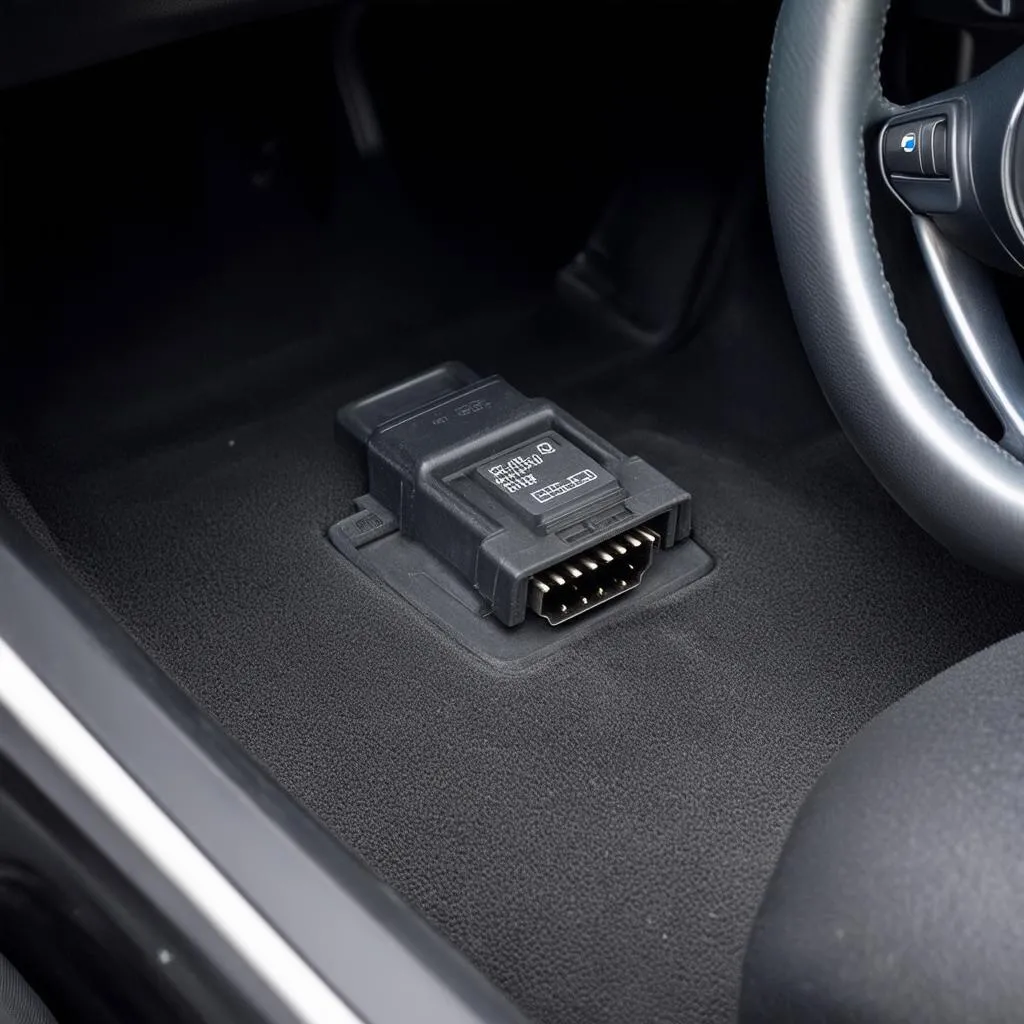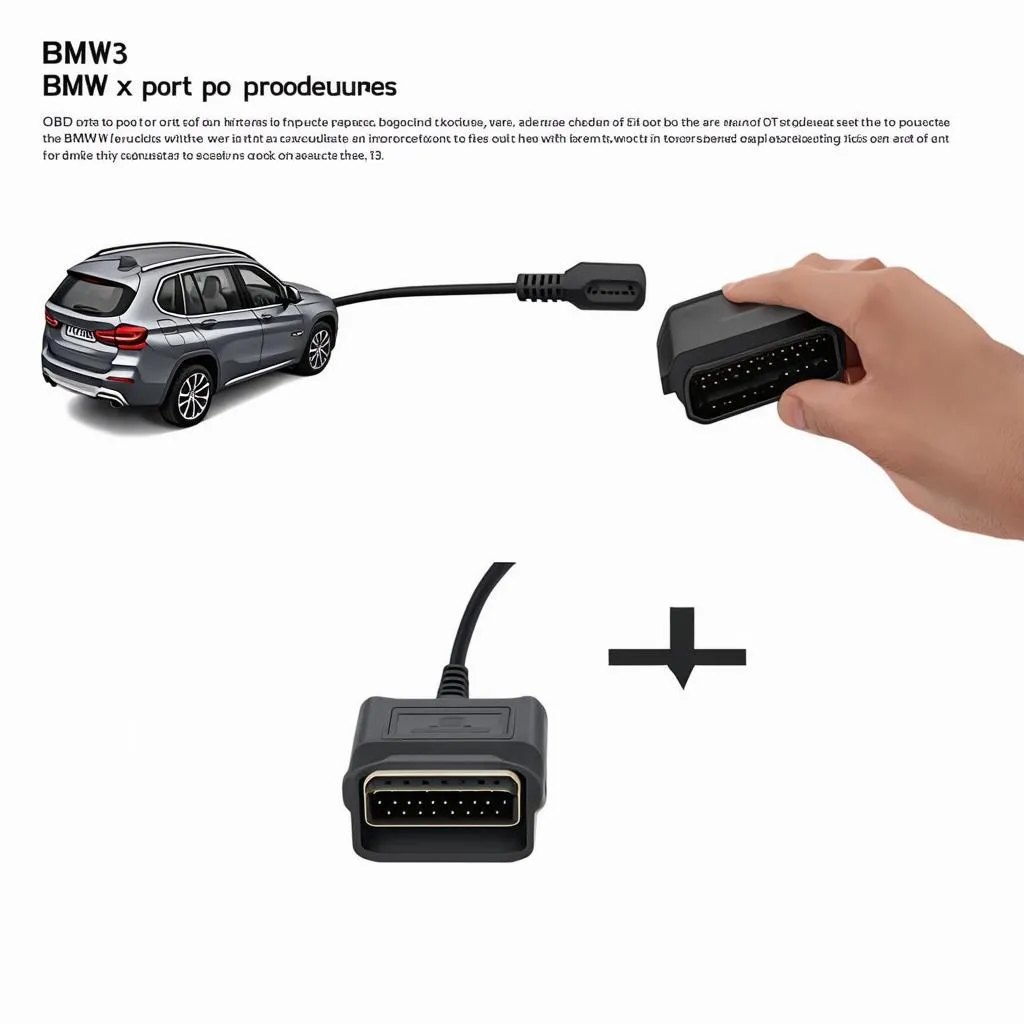Have you ever wondered where the OBD port is located on your BMW X3? You’re not alone! This question often pops up when you need to connect a diagnostics tool to your car. It’s like a secret door to your car’s internal systems, giving you a peek into its health and performance.
Understanding the OBD Port Location on Your BMW X3
The OBD (On-Board Diagnostics) port is a crucial component of your car’s diagnostic system. It’s like a gateway to a world of information about your car’s engine, emissions, and other important systems.
The Importance of the OBD Port: A Gateway to Your Car’s Inner Workings
Imagine your car as a complex machine with a mind of its own. The OBD port is the keyhole that allows you to peek inside and understand its thoughts. Using a diagnostic tool, you can access information that helps you understand what’s happening beneath the hood. This information can be incredibly valuable, helping you detect issues early, troubleshoot problems, and keep your car running smoothly.
Where is the OBD Port on a BMW X3?
The OBD port on most BMW X3 models is typically located underneath the dashboard on the driver’s side. It’s often hidden behind a small panel or cover. Look for a rectangular connector with 16 pins. It may be located near the steering column, fuse box, or the driver’s side knee panel.
Finding the OBD Port: A Practical Guide
Step 1: Start by opening the driver’s side door.
Step 2: Look below the dashboard. Check the area near the steering column, fuse box, or driver’s side knee panel.
Step 3: Carefully look for a small panel or cover. It may be marked with an “OBD” logo or a symbol resembling a connector.
Step 4: Remove the cover or panel. This will expose the OBD port.
Step 5: Connect your diagnostics tool to the OBD port. It should fit snugly.
Tips for Finding the OBD Port:
-
Consult your owner’s manual. It may have a diagram or detailed instructions on where to find the OBD port.
-
Use a flashlight. This will help you see the area underneath the dashboard more clearly.
-
Use a small mirror. This can help you see hard-to-reach areas.
Common Issues and Solutions:
-
OBD port is not visible: This might happen if the cover is securely attached or hidden behind other components. Try using a thin, flat object like a credit card to pry the cover open.
-
OBD port is damaged: If you notice any damage to the OBD port, it’s best to consult a qualified mechanic. They can inspect the port and repair it as needed.
-
OBD port is missing: In rare cases, the OBD port might be missing altogether. This could be due to modifications or customizations made to the vehicle.
Here’s a story from a seasoned mechanic:
“I once encountered a BMW X3 with a missing OBD port. It turned out that the previous owner had decided to install an aftermarket navigation system, which required them to remove the original dashboard. During the installation, the OBD port was accidentally discarded. I had to replace the entire dashboard to fix the issue. “
 BMW X3 OBD Port Location
BMW X3 OBD Port Location
Frequently Asked Questions
Q: What does OBD stand for?
A: OBD stands for On-Board Diagnostics.
Q: What kind of diagnostic tools can I use with the OBD port?
A: You can use a wide range of diagnostic tools, including:
-
Code readers: These tools can read and clear diagnostic trouble codes (DTCs) from your car’s computer.
-
Scanners: These more advanced tools can provide detailed information about your car’s systems, including sensor readings, data logs, and even live data streams.
-
Diagnostic software: Some software programs allow you to connect your computer or smartphone to the OBD port and access detailed information about your car’s systems.
Q: Do I need a special OBD tool for my BMW X3?
A: While most OBD tools work with all vehicles, some tools are specifically designed for certain brands or models. For example, some tools may have specific features or data streams that are tailored for BMW vehicles. It’s always a good idea to check the tool’s compatibility with your BMW X3 before purchasing it.
Q: Can I use the OBD port to improve my car’s performance?
A: While some tools can help you monitor your car’s performance, using the OBD port to make significant changes to your car’s performance is not recommended. Modifying your car’s software or hardware without proper knowledge and expertise can potentially damage your vehicle.
Q: Where can I find more information about the OBD port and diagnostics?
A: You can find a wealth of information online, including websites dedicated to automotive diagnostics, forums, and even YouTube tutorials. Don’t hesitate to search for resources specific to your BMW X3 model.
Related Articles:
- 2005 BMW X3 OBD Port Location
- BMW X3 OBD Cover
- 2013 BMW X3 OBD Cover
- 2016 BMW X3 OBD Port
- 2000 Ford Focus SE OBD Port Location
Final Thoughts
The OBD port is your gateway to understanding your BMW X3. It provides a direct line to its inner workings, allowing you to monitor its health and diagnose any potential issues.
Remember to always use reliable diagnostic tools and seek professional assistance when needed. Understanding your car’s diagnostics can help you keep it running smoothly for many miles to come.
If you need assistance with diagnostics or have any questions about your BMW X3, feel free to contact our team of experts. We offer 24/7 support via Whatsapp: +84767531508.
 OBD Port Diagnostics
OBD Port Diagnostics